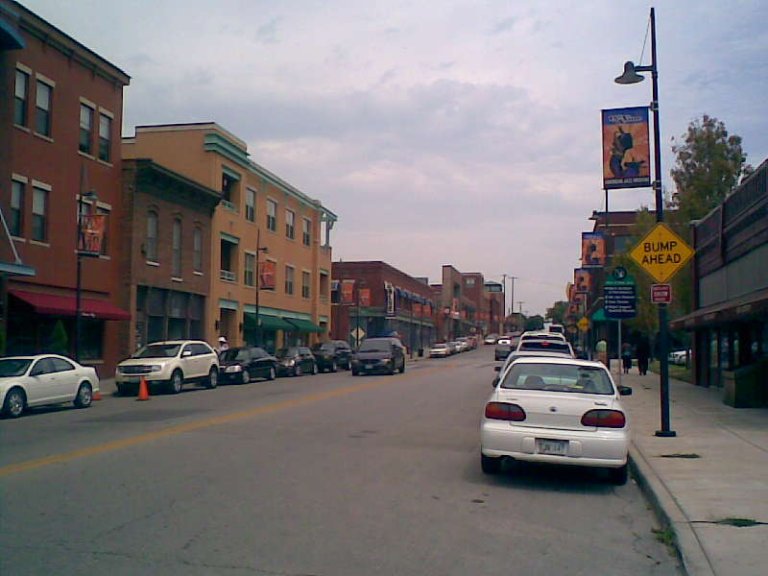- 18th and Vine-Downtown East, Kansas City
Infobox_nrhp | name =18th and Vine Historic District
nrhp_type = nrhp

|thumbnail|right|222px
caption =
location=Kansas City, MO
area =
architect= Multiple
architecture= Colonial Revival, Italianate, Mission/spanish Revival
added =September 9 ,1991
governing_body = U.S. POSTAL SERVICE
mpsub=18th and Vine Area of Kansas City MPS
refnum=84004142cite web|url=http://www.nr.nps.gov/|title=National Register Information System|date=2007-01-23|work=National Register of Historic Places|publisher=National Park Service]18th and Vine in Kansas City is internationally recognized as one of the cradles of jazz. Along with
New Orleans 'sBasin Street ,Beale Street in Memphis,52nd Street inNew York andLos Angeles 's Central Avenue - the 18th and Vine area was a midwife to the birth of a new style ofjazz . Like the spicy barbecue for which Kansas City is so widely noted, the jazz that evolved in the 18th and Vine district was likewise distinctive. Simmered in the blues, Kansas City's jazz was a riff-based sound fueled by jam sessions in the district's crowded clubs. A list of the musicians who worked and made their home in the historic district reads like a veritable Who's Who of Jazz in the 1930's and 1940's.Charlie Parker is likely the most noted modern jazz musician to come from Kansas City. However, many notables call the city home or got their start in this significant jazz scene.Located just east of
Downtown Kansas City , it is the Kansas City metropolitan area's historic center ofAfrican American culture. It has been the focus of more than $30 million of civic investment since the late 1980s, but the district's redevelopment has struggled. [http://www.pitch.com/2006-09-14/news/done-deal/]In the 1990s, parts of the film "Kansas City" were filmed there. Façades left from the movie remained on most of the dilapidated buildings until the end of the 1990s. Today, the 18th and Vine district includes the
Mutual Musicians Foundation , the Gem Theater, the long-time offices of African-American newspaper "The Call", the Blue Room jazz club, theAmerican Jazz Museum , theNegro Leagues Baseball Museum , restaurants and apartments. The district is also home to the Historic Lincoln Building which served as a hub of professional and business activity in the Black community. The building was restored in the early 1980's by the Black Economic Union of Kansas City, and continues to serve this purpose today.References
[1] cite news |last=Barton |first=Eric|url=http://www.pitch.com/2006-09-14/news/done-deal/ |title=Done Deal |publisher=The Pitch |date=2006-09-14 |accessdate=2007-04-03
External links
* [http://www.kccall.com/ Web site] for the African-American newspaper "The Call", which is located in the historic district
* [http://www.umkc.edu/orgs/kcjazz/jazztext/18thvine.htm "18th & Vine: Streets of Dreams,"] a more detailed history of jazz in this area that also references jazz songs that mention 18th & Vine
* [http://www.umsl.edu/~libweb/blackstudies/basie.htm Brief overview of the district] from "Preservation Issues"
* [http://www.beukc.org] Website for the Black Economic Union and the Historic Lincoln Building
* [http://www.kcjazzdistrict.org] Website for the Jazz District Redevelopment Corporationee also
*
List of neighborhoods in Kansas City, Missouri
Wikimedia Foundation. 2010.
